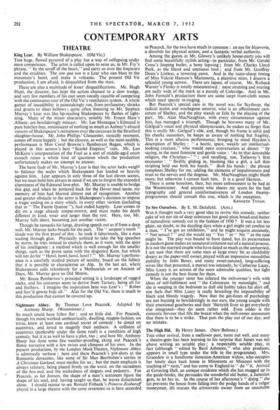To See Ourselves. By E. M. Delafield. (Arts.) Was it
thought such a very good idea to revive this comedy, neither cake of wit nor ale of deep substance but good plain bread-and-butter of naturalistic comedy cut in the fashion of 1930 ? It was a lot less plain, no doubt, in the dazzling days when a girl might yet confess to a man, " I've got an inhibition," and he might enquire anxiously, " Not sexual ? " and she would say " Yes " or" No " as the case might be. The play was bound to have dated, but its presentation in modern guise makes an unnatural irritation out of a natural process. It is not the married couple who have dated so much as the unmarried. I am sure that there are some men at large every bit as cloddishly dreary as the paper-mill owner, played with an impressive monolithic stolidity by John Boxer, and many sweet-natured, long-suffering wives like that presented, a morsel too intensely, by Catherine Lacey. Miss Lacey is an actress of the most admirable qualities, but light comedy is not the best frame for them.
When the younger sister has infected the mill-owner's wife with ideas of self-fulfilment and `•` the Colosseum by moonlight," and she is weeping in the bedroom as dull old hubby takes his shirt off, one feels that Miss Lacey is really bewailing the impossibility of black and bloody tragedy. Now that the gin-fizzes of psychology are not buzzing so bewilderingly in our ears, the young couple with their emotional gaucheries and their 'thirtyish fever to get everybody else integrated—they do seem rather odd. Even odder- is the romantic fervour that fills the breast when the mill-owner announces that there is to be a strike. That puts the play out of our day, and no mistake.


































 Previous page
Previous page